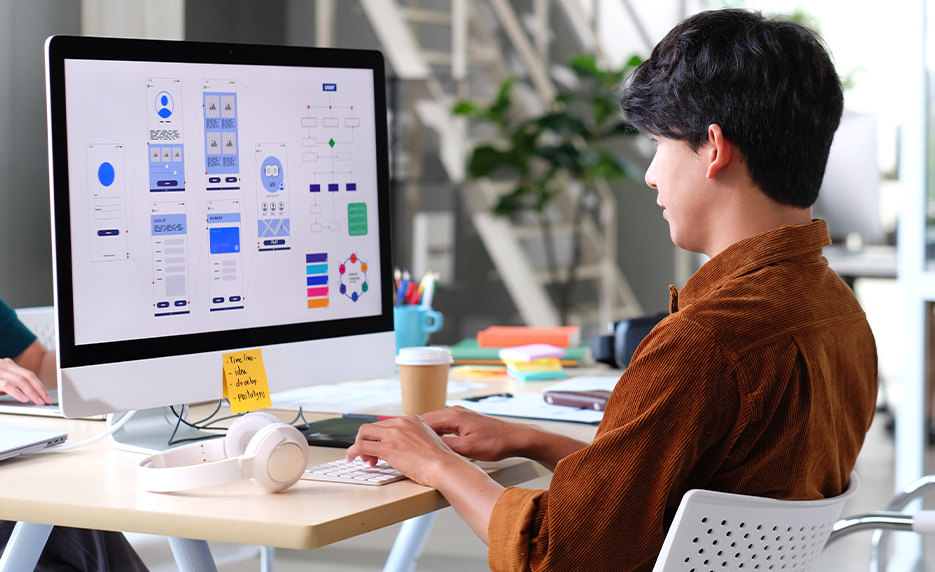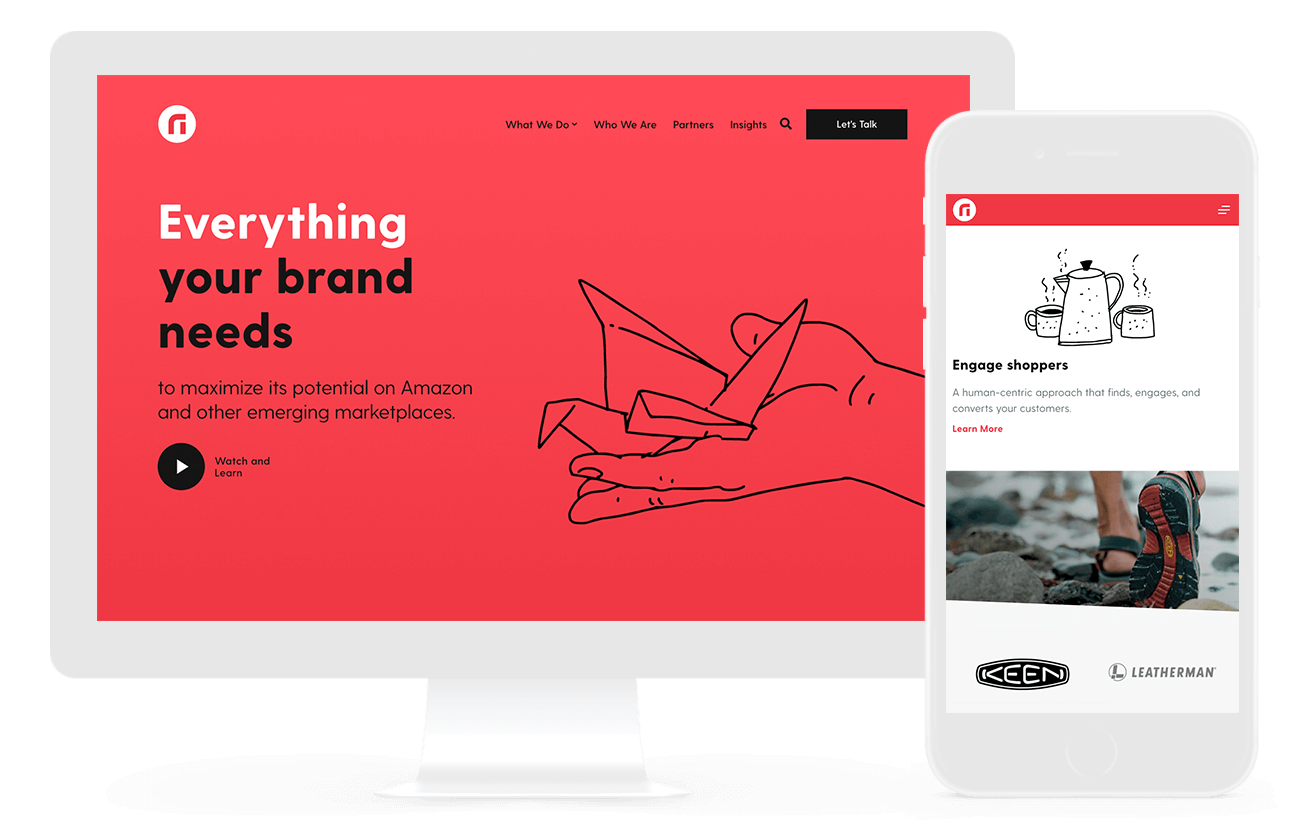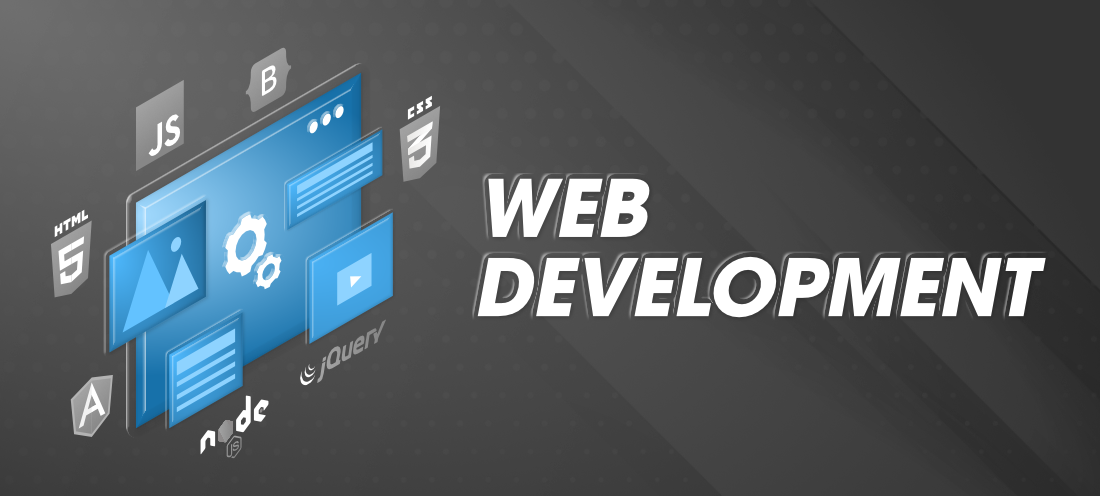All Categories
Featured
Table of Contents
- – 53 Web Design Tools To Help You Work Smarter I...
- – Web Design And Applications - W3c Tips and Tr...
- – Web Design And Applications - W3c Tips and Tr...
- – Penner Home - Durham Web Design - Penner Web ...
- – Boxcar Studio - Wordpress & Drupal Web Design...
- – Web Design Vs. Web Development - Upwork Tips ...
- – Web Design Software By Xara Tips and Tricks:
- – Basics Of Web Development & Coding Specializ...
- – Web Design And Applications - W3c Tips and T...
- – Web Design Inspiration : The Best Website De...
- – Web Design Projects - Behance Tips and Tricks:
53 Web Design Tools To Help You Work Smarter In 2022 Tips and Tricks:
Quick summary Usability and the utility, not the visual style, determine the success or failure of a website. Because the visitor of the page is the only individual who clicks the mouse and for that reason decides everything, user-centric style has developed as a standard method for effective and profit-oriented website design - web design frederick md.
and the energy, not the visual style, identify the success or failure of a site. Since the visitor of the page is the only person who clicks the mouse and therefore decides whatever, user-centric style has ended up being a standard method for effective and profit-oriented web design. After all, if users can't utilize a function, it might too not exist.
g. where the search box must be put) as it has currently been done in a variety of articles; rather we concentrate on the approaches which, utilized effectively, can cause more sophisticated style decisions and streamline the process of viewing presented details. Please see that you might be thinking about the usability-related posts we have actually published before: Concepts Of Great Site Design And Effective Web Design Guidelines, In order to utilize the concepts correctly we first require to comprehend how users communicate with sites, how they believe and what are the standard patterns of users' behavior.
Web Design And Applications - W3c Tips and Tricks:
Visitors glimpse at each brand-new page, scan a few of the text, and click on the first link that captures their interest or slightly resembles the thing they're looking for. In reality, there are large parts of the page they don't even take a look at. Most users search for something fascinating (or useful) and clickable; as quickly as some appealing prospects are found, users click.
If a page offers users with top quality content, they are prepared to jeopardize the material with ads and the design of the website. This is the reason not-that-well-designed sites with top quality material acquire a lot of traffic over years. Content is more crucial than the design which supports it.

Very simple principle: If a site isn't able to satisfy users' expectations, then designer stopped working to get his job done properly and the company loses money. The greater is the cognitive load and the less intuitive is the navigation, the more willing are users to leave the website and search for options.
Web Design And Applications - W3c Tips and Tricks:
Neither do they scan webpage in a direct fashion, going sequentially from one website area to another one. Rather users satisfice; they select the first affordable alternative. As quickly as they discover a link that looks like it may cause the goal, there is an excellent chance that it will be right away clicked.
It doesn't matter to us if we comprehend how things work, as long as we can utilize them. If your audience is going to act like you're creating signboard, then style fantastic signboards." Users wish to have the ability to control their browser and count on the constant data presentation throughout the website.
If the navigation and website architecture aren't instinctive, the number of enigma grows and makes it harder for users to understand how the system works and how to obtain from point A to point B. A clear structure, moderate visual ideas and easily identifiable links can assist users to find their course to their goal.
Penner Home - Durham Web Design - Penner Web Design ... Tips and Tricks:

claims to be "beyond channels, beyond products, beyond distribution". What does it mean? Given that users tend to explore websites according to the "F"-pattern, these 3 statements would be the very first aspects users will see on the page once it is filled. Although the design itself is basic and user-friendly, to understand what the page has to do with the user needs to search for the answer.
When you have actually attained this, you can interact why the system is useful and how users can benefit from it. Don't Waste Users' Persistence, In every job when you are going to offer your visitors some service or tool, try to keep your user requirements very little.
Novice visitors are ready to, not filling long web types for an account they may never ever use in the future. Let users explore the site and find your services without forcing them into sharing private data. It's not affordable to require users to enter an email address to check the feature.
Boxcar Studio - Wordpress & Drupal Web Design ... - Ann Arbor Tips and Tricks:
And that's what you want your users to feel on your web site. The registration can be done in less than 30 seconds as the type has horizontal orientation, the user doesn't even require to scroll the page.
A user registration alone suffices of an obstacle to user navigation to cut down on inbound traffic. 3. Handle To Focus Users' Attention, As sites provide both fixed and dynamic material, some aspects of the user interface attract attention more than others do. Certainly, images are more attractive than the text just as the sentences marked as vibrant are more attractive than plain text.
Focusing users' attention to particular areas of the website with a moderate use of visual components can help your visitors to get from point A to point B without thinking about how it in fact is expected to be done. The less question marks visitors have, the they have and the more trust they can establish towards the business the site represents.
Web Design Vs. Web Development - Upwork Tips and Tricks:
4. Make Every Effort For Feature Direct exposure, Modern web designs are normally criticized due to their approach of assisting users with aesthetically appealing 1-2-3-done-steps, big buttons with visual results etc. From the design viewpoint these components in fact aren't a bad thing. On the contrary, such as they lead the visitors through the website content in an extremely basic and user-friendly method.
The site has 9 primary navigation alternatives which show up at the very first glimpse. The choice of colors might be too light. is a fundamental concept of effective user interface design. It doesn't really matter how this is accomplished. What matters is that the content is well-understood and visitors feel comfortable with the way they interact with the system.
Rather a price: simply what visitors are looking for. An ideal service for reliable writing is touse short and concise phrases (come to the point as quickly as possible), usage scannable design (classify the content, utilize multiple heading levels, use visual components and bulleted lists which break the flow of uniform text blocks), use plain and objective language (a promotion does not require to sound like advertisement; provide your users some reasonable and objective reason why they must utilize your service or remain on your website)6.
Web Design Software By Xara Tips and Tricks:
Users are seldom on a website to enjoy the design; additionally, in many cases they are trying to find the details despite the style - web design frederick md. Pursue simplicity instead of intricacy. From the visitors' viewpoint, the finest website style is a pure text, without any ads or additional content blocks matching precisely the query visitors used or the content they have actually been searching for.
Finch plainly provides the details about the website and offers visitors a choice of options without overcrowding them with unneeded content. 7. Do not Hesitate Of The White Space, In fact it's truly tough to overstate the significance of white space. Not just does it assist to for the visitors, but it makes it possible to view the details presented on the screen.
Complex structures are harder to read, scan, examine and work with. If you have the option in between separating two style sections by a visible line or by some whitespace, it's generally better to utilize the whitespace service. (Simon's Law): the much better you handle to supply users with a sense of visual hierarchy, the easier your content will be to view.
Basics Of Web Development & Coding Specialization - Coursera Tips and Tricks:
The exact same conventions and guidelines ought to be applied to all elements.: do the most with the least quantity of hints and visual components. Clarity: all parts must be created so their meaning is not ambiguous.
Conventions Are Our Pals, Traditional design of website elements does not result in an uninteresting web site. It would be a functionality nightmare if all websites had different visual presentation of RSS-feeds.
comprehend what they're anticipating from a site navigation, text structure, search placement etc. A case in point from functionality sessions is to translate the page in Japanese (presuming your web users do not know Japanese, e. g. with Babelfish) and offer your functionality testers with a task to find something in the page of various language.
Web Design And Applications - W3c Tips and Tricks:
Steve Krug suggests that it's better to, however make the most of conventions when you do not. 10. Test Early, Test Often, This so-called TETO-principle ought to be applied to every web design task as usability tests frequently provide into significant problems and issues related to a given design. Test not too late, not insufficient and not for the wrong reasons.
Some important points to remember: according to Steve Krug, and screening one user early in the project is better than testing 50 near the end. Accoring to Boehm's first law, mistakes are most regular during requirements and design activities and are the more costly the later on they are removed.
That means that you develop something, test it, fix it and after that check it again. There might be problems which haven't been found throughout the preliminary as users were almost obstructed by other problems. usability tests. Either you'll be pointed to the problems you have or you'll be pointed to the absence of major style flaws which remains in both cases a helpful insight for your task.
Web Design Inspiration : The Best Website Design Ideas Tips and Tricks:

This holds for designers too. After you have actually dealt with a website for few weeks, you can't observe it from a fresh viewpoint anymore. You understand how it is built and therefore you know precisely how it works you have the knowledge independent testers and visitors of your website wouldn't have.
It can be linked to other locations such as graphic design, user experience, and multimedia arts, however is more aptly seen from a technological perspective. It has ended up being a big part of individuals's daily lives. It is hard to imagine the Internet without animated graphics, different designs of typography, background, videos and music.

During 1991 to 1993 the World Wide Web was born. Text-only pages could be seen utilizing an easy line-mode internet browser. In 1993 Marc Andreessen and Eric Bina, developed the Mosaic internet browser. At the time there were numerous web browsers, however the bulk of them were Unix-based and naturally text heavy. There had actually been no integrated method to graphic style aspects such as images or sounds.
Web Design Projects - Behance Tips and Tricks:
The W3C was created in October 1994 to "lead the Internet to its full capacity by developing common protocols that promote its development and guarantee its interoperability." This dissuaded any one company from monopolizing a propriety browser and shows language, which could have modified the effect of the Internet as a whole.
As this has actually happened the innovation of the web has likewise carried on. There have also been substantial changes in the method individuals utilize and access the web, and this has changed how sites are designed. Given that the end of the browsers wars [] new internet browsers have been released. A lot of these are open source implying that they tend to have quicker development and are more supportive of brand-new standards.
Learn more about Lovell Media Group LLC or TrainACETable of Contents
- – 53 Web Design Tools To Help You Work Smarter I...
- – Web Design And Applications - W3c Tips and Tr...
- – Web Design And Applications - W3c Tips and Tr...
- – Penner Home - Durham Web Design - Penner Web ...
- – Boxcar Studio - Wordpress & Drupal Web Design...
- – Web Design Vs. Web Development - Upwork Tips ...
- – Web Design Software By Xara Tips and Tricks:
- – Basics Of Web Development & Coding Specializ...
- – Web Design And Applications - W3c Tips and T...
- – Web Design Inspiration : The Best Website De...
- – Web Design Projects - Behance Tips and Tricks:
Latest Posts
Html Responsive Web Design - W3schools Tips and Tricks:
Web Design Projects - Behance Tips and Tricks:
Mrw Web Design - Wordpress Websites For Nonprofits ... Tips and Tricks:
More
Latest Posts
Html Responsive Web Design - W3schools Tips and Tricks:
Web Design Projects - Behance Tips and Tricks:
Mrw Web Design - Wordpress Websites For Nonprofits ... Tips and Tricks: